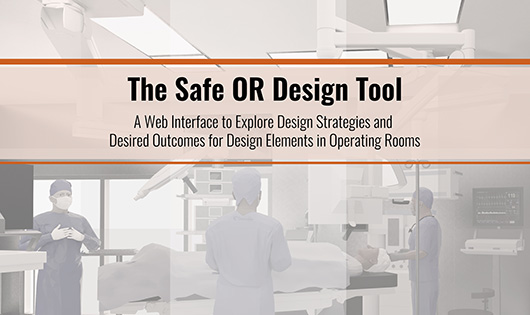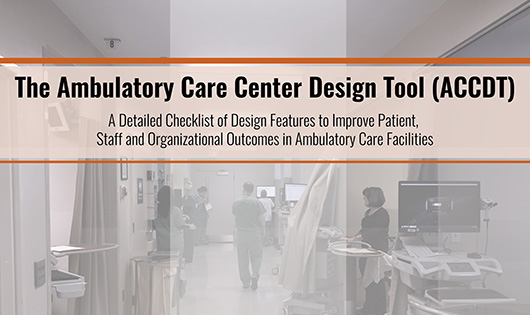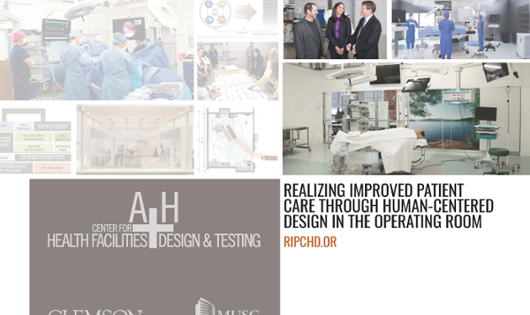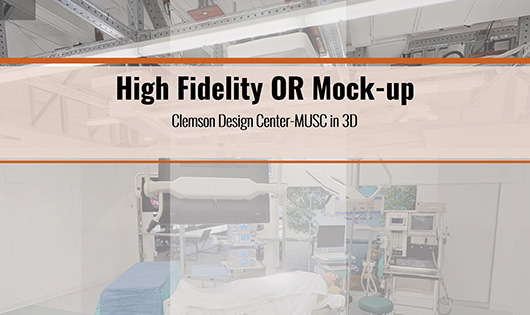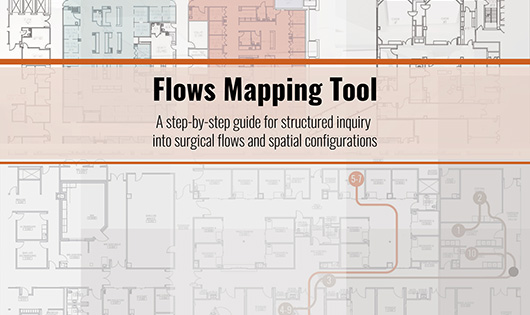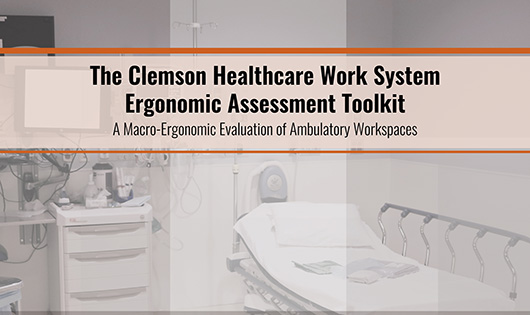
Ergonomic Assessment Tool
Within the ambulatory care environment, healthcare organizations are challenged to address the rapidly advancing technological demands associated with electronic health records (EHR) when building new facilities or renovating existing infrastructures. The Clemson Healthcare Work System Ergonomic Assessment Toolkit is a tool for evaluating the ergonomics of alternative computer workstation configurations within the broader context of the ambulatory work system which they are placed. The toolkit provides guidance for analyzing the strengths and weaknesses of varying applications of technology integration into ambulatory workspaces to support evidence-based design decisions.

